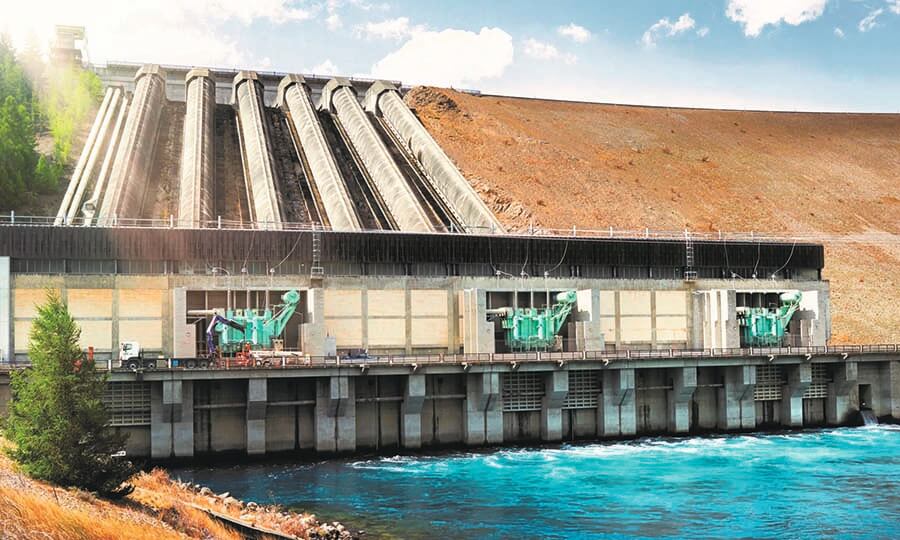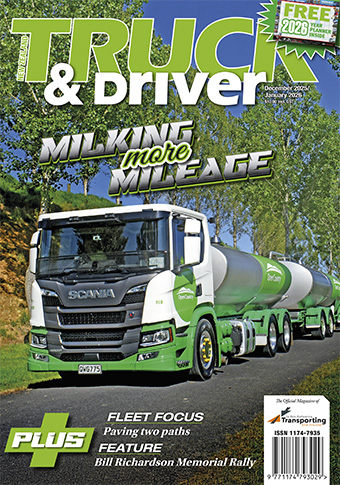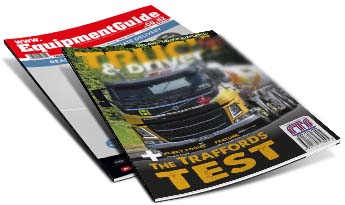Ia Ara Aotearoa Transporting New Zealand News


Low-emissions projects go hand-in-hand with good roads
The lack of charging facilities and support infrastructure is one of the biggest barriers to the adoption of electric vehicles – in particular electric trucks – in New Zealand.
So I was pleased to see a battery-swapping station gain Government and industry support as part of the push to find solutions to heavy transport emissions.
The concept is pretty exciting: Etruck’s director Ross Linton plans to import a semi-robotic gantry from China that will be able to lift out and replace a two-and-a-half-tonne truck battery while you wait.
This will not only result in electric trucks being able to keep running with minimal downtime, but also allow the batteries to be charged at a time when demand for electricity is lower.
The Road Transport Forum (RTF) supports the ongoing development of alternative technologies that move us towards a low-carbon future. But to gain acceptance, the technology needs to be as simple and convenient as the status quo, and that means driving into a fuel station, filling up and driving off. Which is why this project sounds like it’s on the right track.
...The lack of charging facilities and support infrastructure is one of the biggest barriers to the adoption of electric vehicles – in particular electric trucks – in New Zealand.
So I was pleased to see a battery-swapping station gain Government and industry support as part of the push to find solutions to heavy transport emissions.
The concept is pretty exciting: Etruck’s director Ross Linton plans to import a semi-robotic gantry from China that will be able to lift out and replace a two-and-a-half-tonne truck battery while you wait.
This will not only result in electric trucks being able to keep running with minimal downtime, but also allow the batteries to be charged at a time when demand for electricity is lower.
The Road Transport Forum (RTF) supports the ongoing development of alternative technologies that move us towards a low-carbon future. But to gain acceptance, the technology needs to be as simple and convenient as the status quo, and that means driving into a fuel station, filling up and driving off. Which is why this project sounds like it’s on the right track.
We know the infrastructure required to support EVs and other alternative transport fuels is challenging. It will require a massive amount of energy on top of what our current generation capacity is now, which is presenting the Government with some problems.
One solution being looked at is what is called the NZ Battery Project – an investigation into whether places like Lake Onslow in Otago can be developed into pumped hydro schemes.
It was also recently announced that energy companies Meridian and Contact are co-funding a $2million feasibility study to investigate the potential of a large-scale, renewable hydrogen production facility in the lower South Island that would basically replace the energy usage from the soon-to-close Tiwai Point Aluminium Smelter.
If the project ever gets up and running it would provide major decarbonisation possibilities for heavy transport, with hydrogen trucks becoming a much more realistic option.
The RTF has stressed the need for electricity generation to match future demand; distribution infrastructure to match alternative fuel sources; and connectivity to support both technology in trucks and communications with customers as part of our recent submission to the NZ Infrastructure Commission.
We have commented in our submission that the Government’s approach to encouraging and supporting transport innovation has so far lacked tangible action and coherence, and has an anti-road building bias that will have perverse impacts on our economy and the efficiency and uptake of alternative vehicle technologies.
NZ is largely a technology taker, and the vast majority of expertise on the feasibility and viability of transport innovation lies within the market and transport sector leadership groups, not with Government.
Just as we believe the Government should not dictate how and when individuals and businesses choose to move their freight and household goods, we also consider that Government officials do not have the expertise to examine payload efficiencies, nor to interfere in normal market forces that will inherently drive efficiencies and new technologies.
If Government continues to arbitrate over transport modes, consumer costs will unavoidably increase and those cost impacts will disproportionally affect low-income and vulnerable NZers. We recommend that decisionmakers be much more realistic on the likely impacts of their policies on society and that they substantiate those with an evidence base of costs versus benefits.
The freight market is customer driven and ultimately, the customer – whether in NZ or in our export markets – will decide on price, convenience and/or time, and what is the best mode of transport for their goods.
Interventions to advantage one transport mode over another – in this case trying to force freight onto rail – inevitably creates unnecessary additional costs and lowers overall economic prosperity, because it removes the choice to use the most cost-efficient freight solution.
A flaw in the present approach to infrastructure policy is a misplaced ideological position that rail freight is a competent competitor to road freight, instead of being seen as a complementary service. This position is based on an assumption that rail can flourish without road transport support. In reality, the opposite is true.
Competition between both road freight companies and other modes of transport (rail and coastal shipping) has served NZ’s economy well and certainly produces greater efficiencies than policies that favour one transport mode over another.
Continued investment is required in the infrastructure that supports road freight, given its dominance in the NZ freight task. The Ministry of Transport’s continued discussion about modal share and shifting freight to rail or coastal shipping at the expense of our roads just doesn’t make sense. Wellington does not understand the transport business and should not be making decisions on how things should be moved from point A to point B.
A further example of the muddled thinking around modal change is the purchase of two new roll-on, roll-off rail ferries to replace the existing Interislander fleet.
Transport Minister Michael Wood said the two new ferries, which will cost more than half-a-billion dollars, will triple the rail capacity of the current fleet and encourage more freight onto trains and off roads.
Anything that increases the amount of freight capacity over the Cook Strait has got to be a positive thing, but I don’t think there’s anywhere else in the world that’s building rail ferries at the moment. It’s another example of the Government spending taxpayers’ money to make our freight system less efficient….and just doesn’t make sense.
When it comes to emissions reductions, there are a number of approaches – particularly around different fuel types and driving – that could be implemented in the short term to reduce emissions. The industry has suggested these in numerous discussion papers and we are getting increasingly frustrated that, rather than pursue these tangible returns, the Government appears to continue with their fundamentally flawed policy idealisms and search for an unobtainable nirvana.
Government climate-change policies will have an impact on the cost competitiveness of new fuels through excise taxes, licensing costs, and the Emission Trading Scheme (ETS). Our view is that the Government should not pick a technology for its support prematurely, but instead allow technological developments and industry response to find the best solutions.
No matter what powers future heavy vehicles, we need to optimise existing roading infrastructure and ensure it continues to be fit for purpose. As much as policymakers may wish to steer away from road freight, there is little doubt that roads will be critical to all other infrastructure builds, including the provision of EV charging stations and hydrogen-based transport.
As international research shows, improving road quality increases both economic and environmental efficiencies.
Regardless of one’s political ideologies, it is an unavoidable truth that there are some pressing infrastructure needs that must be met for NZ to remain competitive.
Given our geographical and natural hazard profile as well as the fact that we are an export-led economy that relies on getting things to and from the farm gate as quickly and efficiently as possible, these solutions must include high-performing roads.



 + EQUIPMENT GUIDE - FREE
+ EQUIPMENT GUIDE - FREE
